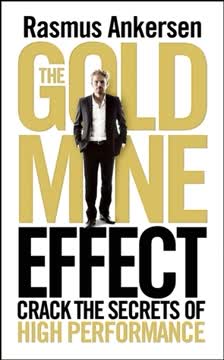Key Takeaways
1. Talent is everywhere, but the ability to capitalize on it is rare
The secret is that there is no secret. And we won't tell you what it is because there is none. But we'll keep pushing you to make you think there is.
Talent is universal. Contrary to popular belief, talent is not race-linked or geographically concentrated. It exists everywhere, in every community and every country. The real challenge lies in identifying and nurturing this talent.
Capitalization is key. The difference between successful and unsuccessful individuals or organizations often comes down to their ability to capitalize on existing talent. This concept, known as the "talent quotient" (TQ), measures the percentage of potential that is successfully unlocked in a given community.
- High TQ environments:
- Identify potential early
- Provide opportunities for development
- Create systems that support talent growth
- Low TQ environments:
- Overlook or misidentify talent
- Lack resources or structures for development
- Fail to create pathways for talent to flourish
2. Look beyond current performance to spot potential
I want to know their stories. I want to know what these people are all about and how they became who they are.
Performance is not potential. Current performance can be a misleading indicator of future success. True talent identification requires looking beyond immediate results to understand the factors driving an individual's performance.
The iceberg principle. Like an iceberg, only a small portion of a person's potential is visible on the surface. The majority lies hidden beneath, shaped by factors such as:
- Training history and opportunities
- Environmental influences
- Motivation and mindset
- Support systems
To identify hidden potential:
- Investigate the story behind the performance
- Assess an individual's rate of improvement
- Look for qualities like resilience, adaptability, and hunger to learn
- Consider the context of their achievements
3. Early specialization and extensive practice are crucial for elite performance
To be the best cyclist on the planet, you don't have to be superhuman in any of the necessary genetic components, but you can't be weak in any of them.
The 10,000-hour rule. Achieving world-class performance in any field typically requires about 10,000 hours of deliberate practice, which translates to roughly ten years of focused training.
Early start advantage. Beginning specialized training at a young age provides several benefits:
- More time to accumulate practice hours
- Development of critical motor skills during key developmental windows
- Building of mental toughness and resilience
- Early exposure to competitive environments
Factors influencing the optimal age to start:
- Competitive pressures in the discipline
- Complexity of the skills required
- The age at which peak performance is typically achieved
While early specialization can lead to burnout or injury if not managed carefully, it remains a common factor among many elite performers across various fields.
4. Mental toughness and belief are as important as physical ability
If you believe you are limited by your genes you will probably never invest what it takes to become good. You've excluded yourself.
The power of belief. An athlete's mental state can significantly impact their physical performance. Belief in one's abilities can push individuals beyond their perceived limits, while doubt can hinder even the most physically gifted.
Creating a belief system. Successful athletes and teams often cultivate a strong belief system:
- Visualization techniques
- Exposure to successful role models
- Creating an environment of high expectations
- Reframing challenges as opportunities
The "performance placebo effect" demonstrates how belief, even if not based on factual information, can lead to improved performance. This mindset allows individuals to push through discomfort and fatigue, often achieving results beyond what they thought possible.
5. Success is about mindset, not facilities or innate talent
A performance environment should not be designed for comfort but for hard work. It has to show people that the road to success is long and uncomfortable.
Comfort can breed complacency. Luxurious facilities and an overemphasis on comfort can actually hinder the development of top performers. The key to success lies in fostering a growth mindset and a willingness to embrace discomfort.
Elements of a performance-driven environment:
- Focus on effort and improvement rather than innate talent
- Encourage risk-taking and learning from failures
- Provide honest, constructive feedback
- Create opportunities for healthy competition
The danger of the "talent" label. Praising individuals for their innate talents rather than their efforts can lead to a fixed mindset, where individuals become afraid to take risks or face challenges that might expose their limitations.
To cultivate a growth mindset:
- Emphasize the importance of effort and persistence
- Celebrate the process of learning and improvement
- Encourage individuals to seek out challenges
- Teach strategies for overcoming obstacles and setbacks
6. Effective leadership balances paradoxical qualities
Leadership is paradoxical – a great leader must be able to build close relationships but be able to keep at a suitable distance.
The complexity of leadership. Effective leaders must navigate a range of seemingly contradictory qualities and behaviors, adapting their approach to the specific needs of their team and situation.
Key paradoxes in leadership:
- Closeness vs. Distance: Building strong relationships while maintaining authority
- Vision vs. Pragmatism: Inspiring with big ideas while managing day-to-day realities
- Confidence vs. Humility: Projecting strength while remaining open to feedback
- Tradition vs. Innovation: Respecting established practices while driving change
Situational leadership. Great leaders understand that different situations call for different approaches. They develop the ability to read contexts and individuals, adjusting their leadership style accordingly.
Characteristics of effective "Godfather" leaders:
- Deep understanding of human nature and motivation
- Ability to balance nurturing support with high expectations
- Focus on long-term development rather than short-term results
- Willingness to adapt methods to individual needs
7. Parental involvement plays a critical role in developing high performers
People say that you shouldn't push your children. But I feel the opposite. If you are not going to help your children to unfold their potential, then who is?
The power of parental influence. Parents play a crucial role in identifying and nurturing their children's talents from an early age. Their involvement can make the difference between potential realized and potential wasted.
Key aspects of effective parental involvement:
- Early identification of talents and interests
- Providing opportunities for skill development
- Instilling discipline and work ethic
- Offering emotional support and encouragement
- Advocating for resources and opportunities
Balancing push and support. While pushing children to excel is important, it must be balanced with emotional support and respect for the child's well-being. The goal is to foster intrinsic motivation and a love for the pursuit of excellence.
Potential pitfalls to avoid:
- Excessive pressure leading to burnout
- Living vicariously through the child's achievements
- Neglecting other aspects of the child's development
- Failing to adapt approach as the child grows and develops
8. Motivation comes from both intrinsic and extrinsic factors
Who wants it most.
The complexity of motivation. While intrinsic motivation (love for the activity itself) is important, extrinsic factors (rewards, recognition, financial gain) also play a significant role in driving high performance.
Sources of motivation for top performers:
- Intrinsic:
- Personal growth and mastery
- Love for the process
- Sense of purpose
- Extrinsic:
- Financial rewards
- Social recognition
- Opportunities for a better life
Developing sustainable motivation. Long-term success requires finding a balance between intrinsic and extrinsic motivators. This often involves:
- Connecting personal goals with larger purposes
- Creating environments that foster both competition and collaboration
- Providing meaningful rewards and recognition
- Encouraging reflection on progress and personal growth
Understanding that motivation is multifaceted allows coaches, parents, and leaders to create more effective strategies for nurturing and sustaining high performance over time.
Last updated:
FAQ
1. What is The Gold Mine Effect by Rasmus Ankersen about?
- Investigating high performance: The book explores why certain small geographic locations, called "Gold Mines," consistently produce world-class athletes and performers.
- Challenging talent myths: Ankersen questions the traditional belief that innate talent or genetics alone determine success, emphasizing the importance of environment, mindset, and opportunity.
- Broader application: Insights from sports are connected to business, education, and personal development, making the book relevant beyond athletics.
- Real-life case studies: The author draws on firsthand experiences and research from places like Kenya, Jamaica, Russia, and South Korea to illustrate his findings.
2. Why should I read The Gold Mine Effect by Rasmus Ankersen?
- Unique firsthand perspective: Ankersen lived and trained with elite athletes, offering rare, on-the-ground insights into the making of champions.
- Debunks common myths: The book reveals that perseverance, mindset, and environment often matter more than natural ability, challenging conventional wisdom.
- Actionable lessons: Readers gain practical advice on talent development, motivation, and leadership that can be applied in sports, business, and education.
- Inspiration for growth: The book encourages readers to rethink how they approach potential, both in themselves and others.
3. What are the key takeaways from The Gold Mine Effect by Rasmus Ankersen?
- Talent is universal: Talent exists everywhere and is not exclusive to certain races or regions; the key is capitalizing on it.
- Mindset and environment matter: High performance is shaped more by belief, culture, and training conditions than by genetics alone.
- Early and deliberate practice: World-class achievement typically requires early specialization and thousands of hours of focused effort.
- Leadership and motivation: The right kind of leadership and a burning desire to succeed are crucial for sustained excellence.
4. What are the "Gold Mines" in The Gold Mine Effect and why are they significant?
- Definition of Gold Mines: These are small, specific locations that consistently produce a disproportionate number of world-class performers.
- Examples from the book: Iten (Kenya), Bekoji (Ethiopia), Kingston (Jamaica), South Korea, Russia, and Brazil are highlighted as Gold Mines.
- Significance: These places demonstrate that environment, culture, and systems play a crucial role in developing elite talent, challenging the idea that success is purely genetic.
- Lessons for others: Understanding what makes these Gold Mines successful can help organizations and individuals replicate high-performance environments elsewhere.
5. How does The Gold Mine Effect by Rasmus Ankersen challenge traditional views on talent and genetics?
- Genetics as a threshold: The book argues that genetics can predict who will never succeed, but cannot reliably predict who will become a star; being "good enough" genetically is necessary but not sufficient.
- Talent is everywhere: Ankersen emphasizes that talent is not race-linked or exclusive to certain groups, but is universally distributed.
- Capitalization over discovery: Success depends more on capitalizing on existing talent (Talent Quotient or TQ) than on discovering rare innate gifts.
- Environment and mindset: The right environment and belief systems are often the decisive factors in turning potential into world-class performance.
6. What is the "Simon Kjaer problem" in The Gold Mine Effect and what does it reveal about talent identification?
- Misjudging potential: Simon Kjaer was initially overlooked by expert coaches, illustrating how true talent is often missed due to superficial assessments.
- Challenges in spotting talent: The book highlights the difficulty of identifying future stars based on current performance or conventional wisdom.
- Global relevance: Every organization faces its own "Simon Kjaer problem"—the risk of overlooking high-potential individuals.
- Need for better systems: The story underscores the importance of looking beyond immediate results and investing in "talent that whispers."
7. What are the eight Gold Mine concepts in The Gold Mine Effect by Rasmus Ankersen?
- List of concepts: The eight are: The secret is not a secret; What you see is not what you get; Start early or die soon; We’re all quitters; Success is about mindset, not facilities; The Godfathers; Not pushing your kids is irresponsible; Who wants it most.
- Purpose of concepts: Each concept delivers a decisive lesson on creating and sustaining world-class performance, applicable across sports, business, and education.
- Examples explained: "The secret is not a secret" debunks genetic myths; "What you see is not what you get" focuses on hidden potential; "Start early or die soon" stresses the importance of early specialization.
- Practical framework: These concepts provide a blueprint for individuals and organizations aiming to develop high performers.
8. How does The Gold Mine Effect by Rasmus Ankersen explain the role of mindset and belief in achieving high performance?
- Belief sets limits: The book shows that self-confidence and mental toughness are crucial, as the brain often sets perceived limits on performance.
- Performance placebo effect: Belief can produce real physiological and psychological effects, enabling individuals to push beyond what they thought possible.
- Kenyan runners’ mindset: Kenyan athletes view discomfort as a challenge, not pain, allowing them to reach new levels of intensity.
- Imagination over knowledge: Ankersen argues that belief, even in things that are not logically true, can be powerfully motivating and essential for breaking records.
9. What does The Gold Mine Effect by Rasmus Ankersen say about the importance of early practice and training?
- 10,000 hours rule: Achieving world-class performance generally requires about 10,000 hours of deliberate, focused practice, often starting young.
- Critical development windows: There are key periods when training is most effective; missing these can limit ultimate achievement.
- Practice over passion: Consistent, focused effort and early ownership of training are more important than simply loving an activity.
- Early specialization: The book suggests that starting early and committing to a discipline increases the chances of reaching elite levels.
10. How does The Gold Mine Effect by Rasmus Ankersen address the role of parents in talent development?
- Parents as key predictors: The book argues that parents’ commitment and ambition often predict a child’s potential better than the child’s own qualities.
- Constructive pressure: Not all pressure is harmful; responsible, engaged parents provide encouragement, stimulation, and necessary discipline.
- Examples from Russia and Korea: The success of Russian tennis players and South Korean golfers is attributed to fiercely ambitious parents who create intensive training environments.
- Balance is crucial: The book distinguishes between egoistic, bullying parents and those who set dreams and ambitions in a supportive way.
11. What does The Gold Mine Effect by Rasmus Ankersen reveal about motivation, grit, and the dangers of complacency?
- Grit as a predictor: Angela Duckworth’s research, cited in the book, shows that passion and perseverance for long-term goals (grit) are better predictors of success than IQ or talent.
- Role models and meaning: Identifying with role models and finding personal meaning in one’s pursuits are powerful motivators that sustain effort through hardship.
- Complacency risks: The book warns that early success or comfort can lead to entitlement and reduced motivation, making continuous improvement essential.
- Divine dissatisfaction: High performers maintain a sense of "divine dissatisfaction," always striving for more rather than resting on their achievements.
12. Who are the "Godfathers" in The Gold Mine Effect by Rasmus Ankersen and what leadership qualities do they embody?
- Definition of Godfathers: These are key coaches and mentors, such as Colm O’Connell (Kenya) and Stephen Francis (Jamaica), who create environments for extraordinary success.
- Paradoxical leadership: They balance being demanding yet patient, visionary yet grounded, and close yet maintaining professional distance.
- Focus on relationships: Godfathers prioritize understanding human nature and building deep, trusting relationships over rigid systems.
- Situational leadership: They adapt their approach to the needs of individual athletes, fostering environments where potential can unfold naturally.
Review Summary
The Gold Mine Effect received generally positive reviews, with readers praising its insights into high performance and talent development in sports. Many found the book thought-provoking and appreciated the author's research into various "talent hotbeds" around the world. Some criticized the book's attempts to apply sports lessons to business and its reliance on anecdotal evidence. Readers appreciated the accessible writing style but noted some editing issues. Overall, the book was seen as an interesting exploration of what drives world-class performance in sports and beyond.
Similar Books


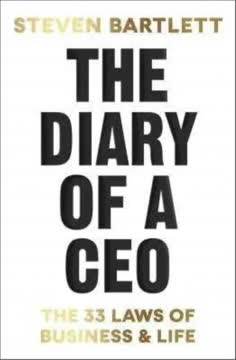
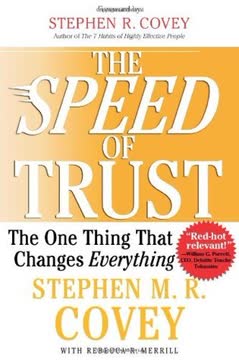
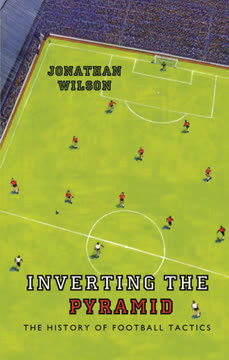
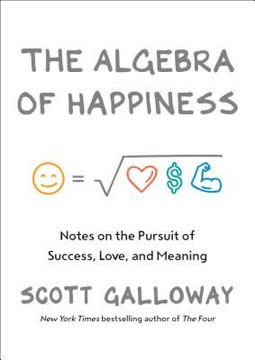

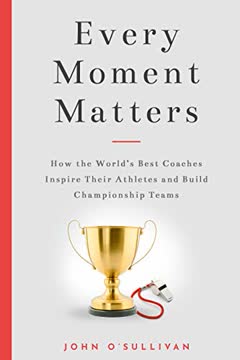

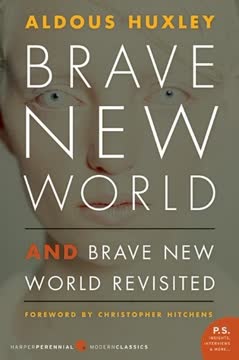
Download PDF
Download EPUB
.epub digital book format is ideal for reading ebooks on phones, tablets, and e-readers.
